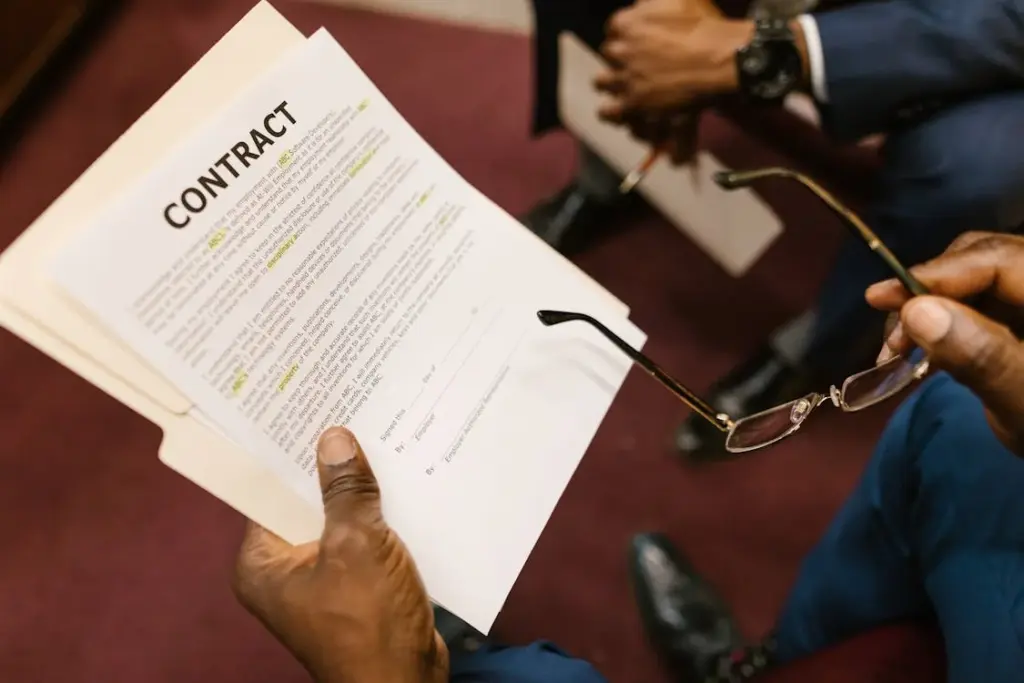Introduction:
Mergers and acquisitions (M&A) in Qatar are governed by a robust legal framework designed to facilitate business growth while protecting stakeholders. Qatar’s regulatory regime – including the Commercial Companies Law, foreign investment rules, and competition protections – sets clear procedures for M&A transactions. Whether a deal involves merging local companies or a cross-border acquisition, investors must navigate shareholder approvals, government oversight, due diligence, and post-merger integration with careful planning. In this article, we provide an in-depth look at the legal frameworks, types of M&A, approval requirements, regulatory considerations, and best practices for successful mergers and acquisitions in Qatar’s business environment. The discussion covers key laws such as Law No. 11 of 2015 (Commercial Companies Law), Law No. 1 of 2019 (Foreign Investment Law), and Law No. 19 of 2006 (Protection of Competition), as well as guidance from regulators like the Ministry of Commerce and Industry (MoCI), Qatar Financial Markets Authority (QFMA), and Qatar Central Bank (QCB). Armed with this knowledge, local and foreign investors can approach M&A opportunities in Qatar with confidence and compliance.
Qatar’s legal framework encourages strategic M&A while ensuring compliance with corporate, investment, and antitrust laws.


Commercial Companies Law:
Qatar’s Commercial Companies Law (CCL) No. 11 of 2015 (as amended by Law No. 8 of 2021) is the primary legislation governing M&A transactions. The CCL provides the procedures for mergers, acquisitions, and corporate restructurings for all forms of companies in Qatar, including public shareholding companies and limited liability companies. Articles 276–290 of the CCL set out the process for mergers and acquisitions, requiring formal agreements, shareholder approvals, and regulatory filings. For example, Article 276 explicitly permits any company to merge with another company (even of a different type or one under liquidation). Subsequent provisions distinguish between merger by absorption into an existing company and merger by amalgamation into a new company, and outline the conditions for each. The CCL requires that a merger or acquisition be approved by an extraordinary resolution of the shareholders of each company involved, meeting the quorum and majority needed to amend the company’s Articles of Association. In practice, this means an Extraordinary General Assembly must vote to approve the merger agreement or acquisition offer, often by a supermajority (e.g. 75% of shares) as specified in the law or company’s charter. Once approved, the companies enter into a merger/acquisition contract and follow CCL procedures for valuation of assets, issuance of new shares (if applicable), and notification of creditors.
Regulatory Authorities:
The M&A process in Qatar involves oversight by key regulators to ensure compliance with corporate and securities laws. The Ministry of Commerce and Industry (MoCI) supervises compliance with the CCL for all companies and must approve amendments to commercial registrations, new share capital structures, and foreign ownership percentages. The Qatar Financial Markets Authority (QFMA) regulates takeovers and mergers of publicly listed companies on the Qatar Stock Exchange, including mandatory offer rules and disclosure requirements under the QFMA Mergers & Acquisitions Rules. For deals involving banks, insurers or other financial institutions, the Qatar Central Bank (QCB) approval is required in addition to MoCI. Sector-specific regulators may also be involved if the target company operates in a regulated industry (e.g. telecommunications or energy), but generally MoCI and QFMA are the lead authorities for corporate M&A. Importantly, Qatar’s Competition Protection Committee (within MoCI, established by Law No. 19 of 2006) oversees antitrust aspects of M&A. Under Article 10 of the Competition Law, any transaction that could create a dominant market position (generally interpreted as a high market share or other ability to control prices) must be notified to the Committee for approval. The Competition Committee has up to 90 days to review a merger notification for anti-competitive effects, after which if no objection is issued, the merger is deemed approved. This effectively acts as a merger control regime: combinations that would lead to market dominance or monopoly are prohibited unless they can be justified by resulting economic benefits outweighing the competition harm. Violations of the Competition Law (e.g. completing a notifiable merger without approval) can incur fines ranging from QAR 100,000 up to QAR 5,000,000. Therefore, part of the legal framework for M&A in Qatar is ensuring that competition clearance is obtained for deals that potentially lessen competition in any market.
Foreign Investment Regulations:
Qatar welcomes foreign investment but imposes certain rules on foreign ownership that impact M&A by non-Qatari investors. The Foreign Investment Law (Law No. 1 of 2019) allows up to 100% foreign ownership of Qatari companies in most sectors, a significant liberalization beyond the former 49% cap. However, full foreign ownership requires approval from MoCI, and some sectors are excepted. Article 4 of Law 1/2019 prohibits foreign investment in banking and insurance without special Cabinet permission, as well as in commercial agency activities. In practice, foreign investors can acquire Qatari companies outright (100% shares) if they obtain MoCI approval, which is decided within 15 days of application per the Law. If MoCI does not respond in 15 days, the application is deemed rejected, but an appeal process to the Minister is available. High-profile sectors such as banking have seen the government open up: in 2021, Qatar’s Cabinet approved raising foreign ownership limits in major Qatari banks to 100%. For publicly listed companies, the default maximum foreign ownership remains 49% unless increased with government and shareholder approval. Any M&A deal that results in a foreign investor owning more than 49% of a Qatar onshore company triggers the need for a Foreign Investment License from MoCI. Foreign investors are advised to conduct early consultations with MoCI to ensure the target business is in a sector open for full ownership and to secure timely approvals. Qatar’s commitment to investment openness, evidenced by Law 1/2019, means many M&A deals (outside a short negative list) can proceed with majority foreign ownership – a key consideration for inbound acquisitions.
Key Laws Summary:
In summary, an M&A transaction in Qatar must comply with:
- Commercial Companies Law (No. 11 of 2015) – primary corporate law governing mergers (Arts. 276–281) and acquisitions (Arts. 287–290). It details the steps for merging entities, issuing new shares, and obtaining shareholder consent.
- Foreign Investment Law (No. 1 of 2019) – regulates non-Qatari ownership, allowing up to 100% foreign investment with approval (except in restricted sectors). Affects share acquisitions by foreign buyers.
- QFMA Law (No. 8 of 2012) and QFMA M&A Rules – apply if a listed company is involved, imposing notification thresholds (10%, 20%, 30%) and mandatory tender offer requirements if an acquirer exceeds 30% or 75% ownership of a listed company. Ensures transparency and minority shareholder protection on the stock market.
- Competition Law (No. 19 of 2006) – requires pre-approval for mergers likely to create a dominant position and prohibits anti-competitive mergers. The law empowers the MoCI Committee to block or conditionally approve such transactions to prevent monopolies.
- Sectoral Regulations – e.g. QCB Law (No. 13 of 2012) for bank mergers, which mandates QCB consent and may impose additional conditions for financial stability. Similarly, mergers involving companies in Qatar Financial Centre (QFC) or Qatar Free Zones would also need to follow those jurisdictions’ rules (distinct from onshore law)
Understanding this legal landscape is crucial for structuring M&A deals in Qatar and avoiding regulatory pitfalls. Next, we explore the types of M&A transactions recognized in Qatar and their specific procedures under the law.

Types of M&A Transactions in Qatar
Qatari law recognizes several forms of mergers and acquisitions, each with distinct legal mechanics:
Merger by Absorption (Joining):
In a merger, one or more companies (the “merged” companies) are absorbed into another existing company (the “surviving” company). The merged companies are dissolved without liquidation, and all their assets, liabilities, and business operations transfer to the surviving company. Article 278 of the Commercial Companies Law outlines the merger by way of joining procedure: the merged company’s shareholders must pass a resolution to dissolve it, the companies agree on a valuation of the net assets, the surviving company passes a resolution to increase its capital to issue new shares to the merged company’s shareholders, and those new shares are distributed to the merging shareholders in proportion to their ownership. After regulatory approvals and registration, the surviving company inherits all rights and obligations of the dissolved entity by operation of law. For example, if Company A absorbs Company B, Company B’s corporate existence ends and Company A continues with an enlarged balance sheet and shareholder base including B’s former owners.
Merger by Consolidation (Mixing):
Two or more companies can also merge to form a completely new company, neither of the originals surviving. Under Article 279, each merging company passes a resolution to dissolve, and they together establish a new company as per normal incorporation rules. The new entity issues shares to the shareholders of the merging companies in accordance with their respective valuations and agreed merger ratio. This is sometimes called merger by amalgamation – Companies A and B both dissolve and transfer their assets/liabilities into newly formed Company C. Company C becomes the successor carrying on the business, and A and B cease to exist. The law treats this new company as having an independent legal personality that inherits all the effects of the merger from the predecessors. In practice, whether by absorption or consolidation, Qatar requires that the merger agreement specify the terms – including asset valuation, share exchange ratios, and treatment of liabilities – to ensure fairness and transparency to all stakeholders.
Statutory Acquisitions (Share Acquisitions):
An acquisition in the Qatari context often refers to one company acquiring a controlling stake in another without fully merging corporate entities. Article 287 of the CCL defines an acquisition as occurring when a company (the “acquiring company”) purchases shares or rights in another company sufficient to give it control. This includes acquiring a majority of voting rights, control via agreements with other shareholders, or any ownership stake >= 40% if it is the largest shareholding in the target. In other words, if Company X buys enough shares of Company Y to control Y’s board or general assembly decisions, X is deemed to have acquired Y under the law. Notably, Qatar’s CCL says owning at least 40% of a company’s shares (if no other shareholder has more) is considered a form of acquisition of control. In a statutory acquisition, the acquired company remains a separate legal entity (unlike a merger), but becomes a subsidiary of the acquirer. The law nonetheless imposes certain requirements for corporate approvals and minority protection, as detailed below.
Asset Purchases and Business Transfers:
In addition to share acquisitions, investors may acquire a business by purchasing its assets (such as a division, product line, or certain properties of a company). Qatar’s laws do not have a separate “asset sale” statute, but such transactions are usually governed by general contract and commercial law. An asset purchase can be attractive if a buyer wants specific assets without taking on the entire company or its liabilities. However, asset deals in Qatar require careful attention to transferring contracts (which may need third-party consents), re-registering title to real estate or movable assets, and potentially addressing employees (if they are part of the business being transferred). Unlike mergers which automatically convey assets and obligations, an asset transfer requires each asset or contract to be assigned as agreed. If the acquisition is effectively the sale of an entire business unit, the parties must ensure compliance with any relevant provisions of the Commercial Registration laws (e.g. notifying the Commercial Registration Department of a sale of a store or enterprise as a going concern). While asset purchases are common for their flexibility, they do not fall under the CCL’s specific merger/acquisition articles and thus don’t trigger the same shareholder approval or statutory minority protections – unless they amount to a sale of substantially all assets of a company, which would in itself require shareholder approval as a major transaction.
In Qatar’s market, mergers are less frequent than acquisitions; most M&A deals take the form of a larger company taking over a smaller company (share acquisition) or joint ventures where one partner buys out another. However, the law facilitates both approaches. Public shareholding companies on the Qatar Exchange typically combine through mergers or acquisitions as allowed by CCL Articles 276–290, and the QFMA’s M&A framework further governs those transactions (e.g. tender offers). It is worth noting that Qatar’s CCL also allows division (demerger) of companies (Article 282–284), where a company splits into two or more companies – essentially the reverse of a merger – though that is beyond our current scope.


Shareholder Approvals and Minority Protection
Shareholder Resolutions:
M&A transactions involve fundamental changes to a company (ownership, capital, control), so Qatar’s laws require approval by the shareholders of the involved companies. For mergers, Article 277 of the CCL mandates that a merger is not valid until each company in the merger approves it in accordance with the conditions for amending the company’s Articles of Association. This typically means an extraordinary general meeting (EGM) must be convened for each merging company, with the quorum and voting thresholds specified by law or the company charter (often a two-thirds or 75% majority vote). The EGM would approve the merger contract and the new share exchange or dissolution as applicable. Similarly, for acquisitions that fall under Article 287 (where one company will acquire control of another), the law requires an extraordinary resolution by the target (acquired) company’s shareholders agreeing to the acquisition and waiving their pre-emption rights to any new shares issued as part of the transaction. The acquiring company’s shareholders must also pass an EGM resolution if the acquisition involves issuing new shares by the acquirer (for example, if the acquirer will pay by granting its own shares to the target’s owners). Additionally, both companies’ decisions are subject to approval by the MoCI (referred to in the law as the “Department”) to become effective. In practice, this means the resolutions and merger/acquisition agreement are submitted to the MoCI, which reviews compliance with legal requirements (like ensuring creditors’ rights are safeguarded and any required notices were made) before recording the new corporate changes.
Public Company Takeovers:
In the context of publicly listed companies, shareholder approval and process are further refined by the QFMA regulations. The general rule is that any person or group acquiring 75% or more of a listed company’s shares must make a mandatory offer to buy out the remaining shares. Conversely, the Commercial Companies Law provides that if an acquisition is approved by the shareholders of the target, then remaining minority shareholders may be compelled to sell their shares at a fair price through a compulsory acquisition, subject to procedures in the law and any relevant QFMA rules. For instance, QFMA’s M&A Rules stipulate that crossing 30% ownership triggers a mandatory tender offer for all other shares, and acquiring more than 75% triggers an obligation to offer to purchase the rest of the shares. These rules ensure that minority shareholders can exit at the same price offered to the controlling shareholders, preventing situations where a new controller takes over without giving minority owners an opportunity to sell at a fair value. Moreover, if an acquirer reaches 90% ownership, QFMA rules give any remaining minority (holding 10% or less) the right to request the regulator to compel the majority shareholder to buy them out. All these provisions underscore that shareholder consent and equitable treatment are cornerstones of M&A in Qatar, especially for public companies.
Minority Shareholder Protections:
Even in private company acquisitions, Qatari law has mechanisms to protect minority investors. Article 288 of the CCL, covering conditions for a valid acquisition, obligates the acquiring company to take steps to protect minority rights in the target. Specifically, if the acquirer is not purchasing 100% of the shares, it must present an offer to the remaining shareholders to buy their shares within no less than 30 days, at a price not less than the value offered to the selling shareholders or as determined by an independent expert. This ensures minority owners who did not vote for or participate in the sale are not left stranded without an exit – they can sell on the same terms as the majority. Additionally, after an acquisition, the acquired company is required to amend its Articles of Association and form a new board of directors reflecting the new ownership structure, thereby recognizing minority representation if applicable. Qatar’s corporate law also upholds general minority rights that indirectly protect them during M&A, such as the right to contest ultra vires acts, the right to dividends proportional to shareholding, and judicial recourse if majority shareholders commit abuse of power or fraud.
Creditor and Third-Party Notices:
As part of the merger process, companies must consider the interests of creditors and other stakeholders. The CCL requires that the merger decision be publicized – it must be published in two local newspapers (at least one in Arabic) and on the companies’ websites. This public notice allows creditors to become aware of the merger. Although the law does not grant creditors an explicit veto, in practice the companies often obtain creditors’ no-objection or refinance debts, because after the merger, the new or surviving company will assume all liabilities. Creditors whose contracts have change-of-control clauses will need to be addressed. Similarly, counterparties to important contracts might need notification or consent if their agreements prohibit assignment or consider merger as a default event. Taking these steps helps ensure that the combined entity can carry on business seamlessly post-merger.
Regulatory Approval as Condition:
It is important to note that even after shareholder approval, an M&A deal is typically conditioned on obtaining regulatory approvals (MoCI, QFMA, QCB, etc.). For example, a merger or acquisition of a Qatari bank will not close until QCB issues a final approval pursuant to its authority under the QCB Law and oversight of financial sector stability. QCB may impose conditions on a banking merger, such as requirements to bolster capital or safeguards for customers of the merging banks. Likewise, a foreign investor’s acquisition remains subject to securing the MoCI foreign investment license. If any required regulator rejects the deal, the transaction cannot proceed even if shareholders agreed. Thus, from signing to closing of an M&A transaction in Qatar, there is usually a period for regulatory review, during which the parties may engage with authorities, fulfill disclosure requirements (e.g. QFMA public offer documents), and satisfy any pre-conditions set by law.
In summary, Qatar’s legal system mandates a careful balancing of interests: majority owners have leeway to pursue M&A that enhances business value, but they must obtain broad approval and treat minority shareholders fairly. Through EGM votes, public tender offer rules, and mandatory buyouts or price protections, the framework aims to prevent oppression of minority investors and ensure transparency.

Due Diligence in M&A Transactions
Conducting thorough due diligence is a critical phase of any M&A deal in Qatar. While not explicitly required by statute, due diligence is standard practice and virtually expected by regulators and counterparties. A comprehensive due diligence examines the target company’s legal, financial, and operational status to uncover any risks or liabilities that would influence the transaction or the valuation.
Key areas typically covered in an M&A due diligence in Qatar include:
- Corporate and Shareholder Information: Reviewing the target’s Commercial Registration, constitutional documents (Articles of Association), corporate governance records, and shareholder structure. This confirms that the company is duly formed, in good standing, and identifies any restrictions on share transfers or pre-emptive rights that could affect the deal. For example, an LLC’s Articles may require existing shareholders’ consent before shares can be sold to a new investor.
- Regulatory and Licensing Compliance: Ensuring the target has all necessary government licenses, permits, and that it complies with sector-specific regulations. In Qatar, businesses often require annual trade license renewals and adherence to Qatar Chamber registration, tax registration (for relevant entities), etc. Any non-compliance (e.g. expired licenses, pending fines) would need resolution prior to acquisition.
- Financial Statements and Tax Position: Analyzing audited financials, management accounts, and tax filings (like income tax or withholding tax, if applicable). Though Qatar imposes corporate tax only on foreign-owned shares of entities (generally 10% tax) and has no VAT yet, understanding any outstanding tax liabilities or compliance with the Qatar Tax Authority is necessary. Financial due diligence also looks at debts, assets, cash flow, and off-balance sheet obligations of the target.
- Material Contracts: Reviewing major contracts such as customer/supplier agreements, loan agreements, leases, franchise or agency agreements, and any joint venture or partnership contracts. The focus is to identify change-of-control clauses, assignment restrictions or termination triggers due to a merger or share transfer. For instance, if the target has a government contract that requires approval for any change in ownership, this must be addressed in the deal planning.
- Employment and HR Matters: Examining the employment contracts, key staff arrangements, end-of-service benefit accruals, and any labor disputes. Qatar’s Labor Law would govern the employees’ rights in a merger or acquisition. Notably, if a company is merged out of existence, its employees by law become employees of the surviving company with continuity of service. The due diligence should flag any outstanding salaries, gratuities or potential redundancy costs if workforce restructuring is anticipated post-merger.
- Litigation and Disputes: Checking for any current or threatened litigation, arbitration, or governmental investigations involving the target. Knowing if the company is embroiled in a major lawsuit or has liability exposure (e.g. a contract dispute or a tort claim) is vital as the acquirer or merged entity will effectively step into those liabilities. Due diligence typically includes a litigation search and review of lawyers’ reports.
- Assets and Intellectual Property: Verifying title to significant assets – real estate ownership (or long-term leases), equipment, and any intellectual property like trademarks or patents. Qatar has registries for land and IP; due diligence confirms the target’s ownership and whether any asset is pledged as collateral. For example, if the company’s factory land is mortgaged to a bank, the buyer must plan to obtain the mortgagee’s consent or refinancing in the acquisition.
- Insurance, Environmental, and Other Areas: Ensuring the company has appropriate insurance coverage (and checking past claims), and that it complies with any environmental health and safety laws (especially if industrial). Qatar has specific regulations for environmental protection and industrial safety which, if violated, could impose cleanup costs or fines on a successor company.


Due diligence in Qatar often reveals practical issues that need resolution before closing. For instance, foreign ownership limits might be discovered in a company’s charter or sector (restricting how much an acquiring foreign investor can own) – prompting structuring solutions or the need for special approvals. Or perhaps certain contracts might require renegotiation because they forbid assignment on merger. Addressing these in the negotiation and transaction documents is crucial. Ordinarily, the due diligence findings are documented in a report and used to negotiate representations and warranties in the sale agreement, or specific indemnities for identified risks. While Qatari law allows freedom of contract to allocate risk, a buyer will rely on due diligence to know what promises to exact from the seller about the company’s condition.
In cross-border deals, due diligence also covers compliance with international laws (sanctions, anti-bribery, etc.) as Qatar businesses trade globally. Given that Qatar does not impose exchange control restrictions, foreign buyers can repatriate profits and capital freely (subject to tax on profits for foreign shareholders), but it remains important to verify the target’s compliance with Qatar’s Anti-Money Laundering/Combating Financing of Terrorism (AML/CFT) regulations and other financial crime laws, as these liabilities could heavily impact the company post-acquisition.
Overall, though time-consuming, thorough due diligence is a best practice for M&A in Qatar. It not only informs the purchaser about the target’s true value and risks, but also prepares the parties to fulfill any legal requirements (like getting third-party consents or regulatory waivers) in a timely manner. Both local and foreign investors are advised to engage experienced legal and financial advisors to perform due diligence covering the full spectrum of Qatari legal compliance and business issues.

Deal Structuring and Transaction Agreements
Structuring an M&A deal in Qatar involves choosing the appropriate method (share purchase, merger, asset sale) and executing the necessary contracts in compliance with Qatari law. The structure will dictate the transaction agreements needed:
Share Purchase Agreements (SPA):
For a straightforward acquisition of an existing company’s shares, the primary contract is a Share Purchase Agreement. In an SPA governed by Qatari law, typical provisions include the number of shares to be sold, purchase price and adjustment mechanisms, representations and warranties about the company’s status, covenants (such as conduct of business between signing and closing), conditions precedent (e.g. regulatory approvals, third-party consents, no material adverse change), closing deliverables, and indemnities for breaches. In Qatar, an SPA must respect any mandatory provisions of local law – for instance, if the target is an LLC, the transfer of shares must be notarized and registered with the MoCI to be effective, and existing partners usually have a right of first refusal to purchase the shares (unless waived) under the CCL. The SPA should thus either obtain waivers from other shareholders or be signed conditional on such waivers. If foreign ownership is involved, a condition precedent will be the MoCI approval under Law 1/2019 for the new ownership percentage. Another local peculiarity is that certain contracts (like government contracts) cannot be “sold” via share transfer without consent – so the SPA might include a condition that those key contracts remain in force post-change of control.
Merger Agreements:
In a statutory merger, the companies typically enter into a Merger Agreement or Merger Plan, which details the terms of the combination. This agreement will cover the type of merger (absorption or new entity), the proposed effective date, the exchange ratio of shares (if shareholders of one company will receive shares in the other or in the new company), the fate of each company’s assets, liabilities, and contracts, and any special conditions (e.g. treatments of fractional shares, arrangements for dissenting shareholders if any). The merger agreement forms the basis for the shareholder resolutions and is often drafted in line with Article 277 and Article 278/279 requirements (covering asset valuation and share allocation). Post-approval, the merger agreement or a notarial deed thereof is filed with MoCI, which will issue a new Commercial Registration for the surviving or new company and deregister the dissolved entities.
Asset Transfer Agreements:
For asset purchases, multiple agreements may be needed: a main Business or Asset Purchase Agreement to transfer the bulk of assets (with schedules listing the specific assets, contracts, and liabilities assumed), along with ancillary assignments for particular assets like land (which requires registered sale at the Ministry of Justice’s Real Estate Registration Department), vehicles (transfer with traffic department), intellectual property (assignment to be recorded with the trademark/patent office), etc. If employees are part of the transfer, either their contracts are terminated by the seller and re-hired by buyer (which triggers paying out end-of-service benefits by seller), or a tripartite agreement is signed to transfer their employment with continuity – though Qatari labor law does not explicitly provide for automatic transfer outside a merger, so careful handling is needed to avoid wrongful termination claims. The Asset Purchase Agreement should also allocate responsibilities for any liabilities not assumed by the buyer (e.g. the seller may retain all liabilities pre-closing except those expressly assumed by buyer). It’s common to include a non-compete clause for the seller in asset deals, to prevent the seller from starting a rival business after selling their operating assets. Under Qatari law, reasonable non-compete agreements ancillary to the sale of a business are generally enforceable (they should be limited in time and geographic scope to be considered reasonable).
Joint Venture or Shareholders Agreements:
If the acquisition results in shared ownership (for example, a foreign investor acquires 60% of a Qatari company and the local partner retains 40%), the parties often sign a Shareholders Agreement to govern their relationship. This can cover matters like board composition, reserved matters requiring joint consent, dividend policy, and exit rights (tag-along, drag-along, put/call options). While not mandated by law, such agreements are crucial in Qatar to supplement the Articles of Association and provide protections beyond the default law (e.g. giving a minority partner veto rights on major decisions, which otherwise under law might only need majority vote).
Regulatory Filings and Approvals:
Transaction structuring must incorporate the timelines and requirements for regulatory approvals mentioned earlier. For instance, when dealing with a public company, the acquirer might initially sign a non-binding offer or term sheet and then announce an intention to make a takeover offer as required by QFMA rules. They would produce an Offer Document for QFMA approval containing prescribed information (details of offeror, terms, financing, etc.). Only after the regulatory green light can the offer be formally made to shareholders. For private deals, often the SPA or merger agreement is signed “conditionally”, and closing is scheduled after obtaining the MoCI, QFMA (if applicable), QCB, and competition authority approvals. In cross-border deals, if the acquisition needs clearance from other jurisdictions’ antitrust authorities (e.g. if the companies do business in other countries), those conditions would be included too. It is important that the long-stop date (drop-dead date) in the contract provides enough time to satisfy all approvals; otherwise, parties may need to extend or risk termination if approvals delay.
Stamps and Taxes:
Qatar imposes no stamp duty or transfer tax on the sale of shares or assets (unlike some jurisdictions). The Legal 500 confirms that share transfers have no taxes or duties; only registration fees (which are minimal, e.g. a few thousand QAR for commercial registration updates) apply. However, asset transfers involving real estate incur a 0.25% registration fee on property value. Additionally, if the target company has a foreign ownership component, the transaction might have tax implications (like triggering income tax on any gain realized by a foreign seller, as Qatar taxes non-Qatari’s profits from share sales in some cases). These need to be considered in structuring (sometimes deals are structured via offshore holding companies in jurisdictions with tax treaties to mitigate this).
In summary, the deal structuring phase translates the due diligence findings and the legal requirements into a coherent set of agreements that achieve the parties’ objectives while complying with Qatar’s laws. This phase is where engaging a Qatari law firm is indispensable – to draft and localize the contracts, handle Arabic documentation (e.g. resolutions in Arabic as required by MoCI), and liaise with officials for approvals.

Employee and Stakeholder Considerations
M&A transactions can significantly impact employees, customers, and other stakeholders, so careful planning is needed to manage these aspects in line with Qatari law and best practices:
Employees:
Qatar’s Labor Law does not explicitly address mergers, but Article 281 of the CCL provides that after a merger, “all the rights and obligations of the merged company shall transfer to the company merged into or arising from the merger”. This implies that employment contracts of a merged company automatically transfer to the surviving/new company, with employees continuing their service uninterrupted. Therefore, from a legal standpoint, a merger is not a termination of employment – the employer’s identity just changes to the successor company. No gratuity or termination benefits are triggered solely by the merger, and the new entity must honor existing employment terms (salary, tenure, leave balances, etc.). For acquisitions done via share purchase, the employing entity remains the same (only its shareholders change), so employees are unaffected in terms of their legal employer. However, in an asset sale scenario, since the employing company is not automatically transferring, the parties typically agree on how to handle employees: usually the seller terminates the employees (paying end-of-service benefits as required) and the buyer rehires them anew. Qatar encourages preservation of employee rights, so buyers often recognize past service for gratuity calculation going forward to reassure employees who move to the new company.
It is considered best practice for the involved companies to communicate with employees about the transaction at an appropriate time (often after key approvals are in place, to avoid premature announcements). This helps maintain morale and retain key talent through the transition. If any redundancies are expected post-merger due to role overlaps, the company must follow the Labor Law’s requirements for termination (valid grounds, notice periods, payment of accrued benefits). Notably, Qatar does not have a works council or unionization for private sector, and there is no legal requirement to consult employees or obtain their consent for a merger or acquisition. Nevertheless, for practical and ethical reasons, many firms provide retention plans or incentives to critical employees to ensure business continuity after the deal.
Pensions and Benefits:
Qatar does not have a mandatory pension scheme for private sector expatriate workers (only a Qatari national pension for government and some private Qatari employees). Most private companies pay end-of-service gratuity as required by law. The treatment of accrued gratuity in a merger should be addressed – typically the liability is carried in the accounts that transfer to the new entity and the employees’ service is deemed continuous. Companies may also have private health insurance or other benefit plans; post-merger, the acquirer will look to harmonize these benefits across the merged workforce.
Customers and Suppliers:
Post-merger integration requires ensuring that customers experience no disruption. From a legal angle, if a company they have a contract with ceases to exist (due to merger), the surviving company or acquirer must step in to perform. Sales contracts, service agreements, and purchase orders should be reviewed for clauses triggered by a merger or change of control. Often, such contracts either allow assignment to an affiliate or successor without consent, or they permit termination by the counterparty if a change of control occurs. To maintain key relationships, the company might seek consents or comfort letters from major customers/suppliers ahead of time. Qatar’s government contracts in particular may stipulate that the contract cannot be assigned or that the government must approve any transfer of obligations – it’s crucial to get such approval to avoid losing a valuable contract after a merger.


Regulatory Stakeholders:
In certain industries like banking, clients’ confidence is paramount. QCB in fact often requires merging banks to submit an integration plan, including how they will unify customer accounts, IT systems, and handle customer communications. Regulators may demand that notices be sent to customers of a bank merger to inform them of the new institution’s name and that all deposits and facilities are transferred to the merged bank. Similarly, listed companies must disclose merger/acquisition developments to the market as material information via QSE announcements to keep shareholders and investors informed.
Integration Planning:
Combining two companies in Qatar involves multiple logistical steps after legal closing. Business licenses might need updating (for example, if the name of the company changes or its activities expand due to the merger). Tax registrations may need consolidation. Office leases may be transferred or re-negotiated if companies were separate. IT systems and data, including personal data of customers or employees, might need to be migrated in compliance with Qatar’s data protection rules (if any apply, such as the QFC Data Protection if in QFC, or draft personal data law onshore). A well-managed integration plan addresses these items ideally by the time the transaction closes or shortly thereafter.
Cultural and Management Integration:
Though not a legal requirement, it is vital in Qatar’s context – which often involves multicultural workplaces – to integrate company cultures and management teams. Many successful mergers invest in change management programs to align policies and procedures, and ensure that the leadership structure of the new entity is clear. The merger agreement may list key executives for the merged company or require that the acquirer honor certain existing employment contracts for a period. For instance, an acquired company’s CEO might be retained as an advisor for continuity. While such matters are largely contractual and HR strategy, they complement the legal consolidation.
In conclusion, Qatar’s laws facilitate the technical side of transferring employees and contracts in M&A, but companies must proactively manage the human and commercial aspects. Respecting the rights of employees (by adhering to all labor law payouts and providing clarity on their status) and assuring customers and suppliers of continued performance are essential to realizing the full value of a merger or acquisition.

Post-Merger Integration and Compliance
The closing of an M&A deal is not the end – it is the beginning of the integration phase. Post-merger integration in Qatar should address legal compliance tasks and business consolidation steps:
- Corporate Compliance: After a merger, the surviving or new company must update its Commercial Registration with MoCI to reflect any changes (new shareholders, increased capital, new company name if consolidation). The CCL requires that the result of the merger be registered and announced. Typically, the new Memorandum and Articles of Association of the company (if changed) are filed with the MoCI. The merged entity should also update its records with the Qatar Chamber of Commerce, Ministry of Labour (for the list of employees under the establishment), General Tax Authority (merging tax file numbers if applicable), and any other licensing bodies. In acquisitions, the share transfer must be recorded on the Commercial Registry; failure to do so means third parties might not recognize the new shareholder’s rights.
- Creditor Arrangements: If not done pre-closing, the merged company should formally notify all known creditors of the merger completion and the assumption of liabilities. Although by operation of law the liabilities transfer, a pragmatic step is obtaining letters of confirmation from key lenders that they acknowledge the new structure (and perhaps to negotiate any needed amendments to loan terms, like covenants or collateral, in light of the merged financials). Often, merging companies refinance debt as part of integration to take advantage of better combined creditworthiness.
- Contract Novation: For any contracts that could not be assigned or novated before closing, the company should work to finalize those novations now. For example, if a certain contract needed counterparty approval and it was obtained, a formal novation agreement is executed post-merger to substitute the new company in place of the old. Similarly, title deeds for real estate might need updating to the new entity’s name – the law would allow doing this by presenting the merger documents at the property registry.
- Synergies and Operations: The company will implement decisions on consolidating operations: e.g. merging two offices into one, consolidating warehouses, unifying supply chain agreements. Care must be taken to maintain compliance during this period – any layoffs or relocations must follow the law; any disposal of excess assets should maximize value for the merged company’s shareholders (especially in a public company context, asset sales might require additional shareholder approval if significant).
- Reporting and Disclosure: If the merged entity is listed, it must report its new consolidated financials and any material developments as required by QFMA rules and stock exchange regulations (like publishing a merger completion notice and the impact on capital and shareholding structure). Even private companies might choose to issue press releases to inform the market or their industry of the successful merger, which in Qatar’s close-knit business community helps reaffirm stability and strategy after M&A. In some cases, regulatory agencies might request a post-merger integration report (for example, QCB with banks as mentioned, or the Competition Committee might monitor that the merged firm doesn’t abuse a dominant position).
- Post-Merger Integration Team: Many companies establish an integration team or steering committee that continues for months after closing to ensure all elements (IT, HR, finance, legal) are smoothly merged. From a legal perspective, one key item is ensuring that all internal governance is unified – the board of directors of the merged company should meet and carry out any formal resolutions promised in the merger plan (like appointment of certain people to the board or executive roles, as agreed between merger parties). These should be documented in board meeting minutes and possibly filed if they involve authorized signatories changes (with Ministry of Justice for specimen signature circulars, etc.).
- Business Continuity and Risk Management: Merging companies should update their risk assessments and insurance policies to reflect the combined business. For example, if Company A and B each had professional liability insurance, post-merger the surviving company should secure a new policy covering the enlarged operations and ensure it tailors coverage (perhaps higher coverage limits due to larger size). Additionally, any compliance programs (such as data privacy compliance, AML, health and safety) should be reviewed and harmonized at the merged entity level to avoid any regulatory breaches due to oversight in the confusion of integration.
In the context of Qatar, one should also be mindful of the human element, as personal relationships are important in Qatari business dealings. After a merger or acquisition, it is wise for the new management to engage with key clients, suppliers, and government stakeholders to reintroduce the company’s vision and ensure confidence. This falls more under corporate strategy, but it is enabled by completing all legal formalities so that there is no ambiguity about the entity’s status when interacting with third parties.


Best Practices for M&A in Qatar
Successfully navigating an M&A deal in Qatar – whether you are a local entrepreneur selling your business, a regional company merging with a peer, or a foreign investor acquiring a Qatari firm – requires strategic planning and adherence to best practices. Some recommended best practices include:
- Engage Expert Advisors Early: Involve experienced legal and financial advisors at the earliest stage. Qatari law has unique requirements (e.g. Arabic notarization, foreign investment licensing, etc.), and local counsel can identify issues early and liaise with regulators on your behalf. Financial advisors can help with valuations and navigating any foreign exchange or funding processes. At Ghanim Law Firm, our M&A lawyers guide clients from initial structuring to final closing, ensuring compliance at every step.
- Conduct Comprehensive Due Diligence: Do not skip on due diligence. Investigate corporate records, litigation, contracts, and financials thoroughly. This will reveal deal-breakers or areas to negotiate stronger protections. For foreign investors, due diligence must confirm the target’s ownership structure aligns with Qatar’s foreign ownership laws (or identify if an exemption is needed). Also perform anti-bribery and sanctions due diligence if acquiring a local company to ensure no hidden liabilities under international laws.
- Plan for Regulatory Approvals and Timelines: Build a realistic timeline that incorporates obtaining all necessary approvals (MoCI, QFMA, QCB, Competition Authority, etc.). Initiate informal consultations with regulators if possible – for example, getting MoCI’s initial view on a proposed 100% foreign acquisition or engaging QFMA early if a public offer is contemplated can smooth the approval process. Qatar’s regulators are generally supportive of legitimate investment, but adhering to their procedural requirements is key to avoid delays.
- Transparent Shareholder Communications: If you are a company initiating a merger or major acquisition, maintain transparency with your shareholders. Call the required meetings with proper notice, circulate an information circular or summary of the deal ahead of the EGM, and comply with disclosure rules (for listed companies, timely public announcements are mandatory). This builds shareholder trust and reduces the risk of dissent or legal challenges. In private companies, at least keep minority partners informed and consider their concerns to prevent future disputes.
- Protect Yourself with Solid Contracts: Ensure that the transaction agreements (SPA, Merger Agreement, etc.) are well-drafted under Qatari law and protect your interests. Sellers should limit their liability through careful representations and warranties qualifiers and caps on indemnity. Buyers should secure conditions and warranties that give recourse if the company is not as represented. Include Material Adverse Change (MAC) clauses to allow exit if something drastic happens to the target before closing (this became a focus during global events like the COVID-19 pandemic). Also, choose the governing law and dispute resolution wisely – Qatari law will often govern core local documents, but parties might opt for arbitration (e.g. at Qatar International Court or ICC) for complex disputes, especially if a foreign party is involved.
- Consider Cultural Factors and Local Partnerships: Foreign investors should be mindful of Qatar’s business culture and sometimes the unwritten expectations. While the law might allow 100% foreign ownership, having a reputable local partner or sponsor can be beneficial in practice for navigating governmental and commercial networks. If a local partner remains (or new one is taken), clearly delineate roles and expectations in a shareholders agreement to avoid conflicts.
- Address Post-Merger Integration Early: Don’t wait until after closing to think about integration. Form joint integration teams as soon as the deal is likely to proceed, and prepare a 100-day plan for after closing covering all the facets mentioned (HR, IT, customer outreach, etc.). This will help in realizing synergies faster and preventing business disruptions. For example, if both companies use different ERP systems, plan when and how to migrate to one system well in advance.
- Compliance and Governance Going Forward: The merged or acquired company may be larger and subject to more oversight (for instance, crossing thresholds that require more rigorous corporate governance or audited accounts). Be ready to implement stronger compliance programs commensurate with the new size. Ensure that company policies are updated to reflect any new ownership (like sanctions compliance if a U.S. entity acquired a Qatari company, it might need to implement U.S. sanctions screening where not done before, etc.).
- Competition Law Adherence: After the merger, keep an eye on competition law compliance. If the merged firm ends up with a dominant market position, it must be cautious not to engage in pricing or practices that could be seen as abusive monopoly behavior, as the Competition Protection Law will hold the new entity accountable. It’s wise to seek advice from competition counsel on pricing strategy or exclusivity agreements post-merger if in a concentrated market.
By following these best practices, investors and companies can greatly increase the likelihood of a smooth M&A process and the long-term success of the merger or acquisition. Qatar’s legal environment, while detailed, ultimately is geared towards promoting investment and economic development – as seen by reforms like allowing full foreign ownership and modernizing corporate law. Thus, with proper guidance, M&A in Qatar can be executed efficiently and in line with global standards.
In conclusion, mergers and acquisitions in Qatar require a blend of legal diligence, strategic planning, and local insight. From ensuring all necessary approvals are secured, to structuring the deal optimally, to integrating businesses effectively, each step carries its own legal considerations. Ghanim Law Firm’s corporate team is adept in advising on all aspects of M&A in Qatar – from initial due diligence and regulatory filings to closing and integration – helping clients achieve their transaction objectives while fully complying with Qatari law. With Qatar’s growing economy and investment-friendly policies, M&A transactions are set to be a key avenue for business expansion, and being well-prepared legally is the key to capitalizing on these opportunities.



5 Comments
sq8etw
fpw0zm
3pw7pt
1jtth8
Hi there, its nice article on the topic of media print, we
all know media is a enormous source of data.